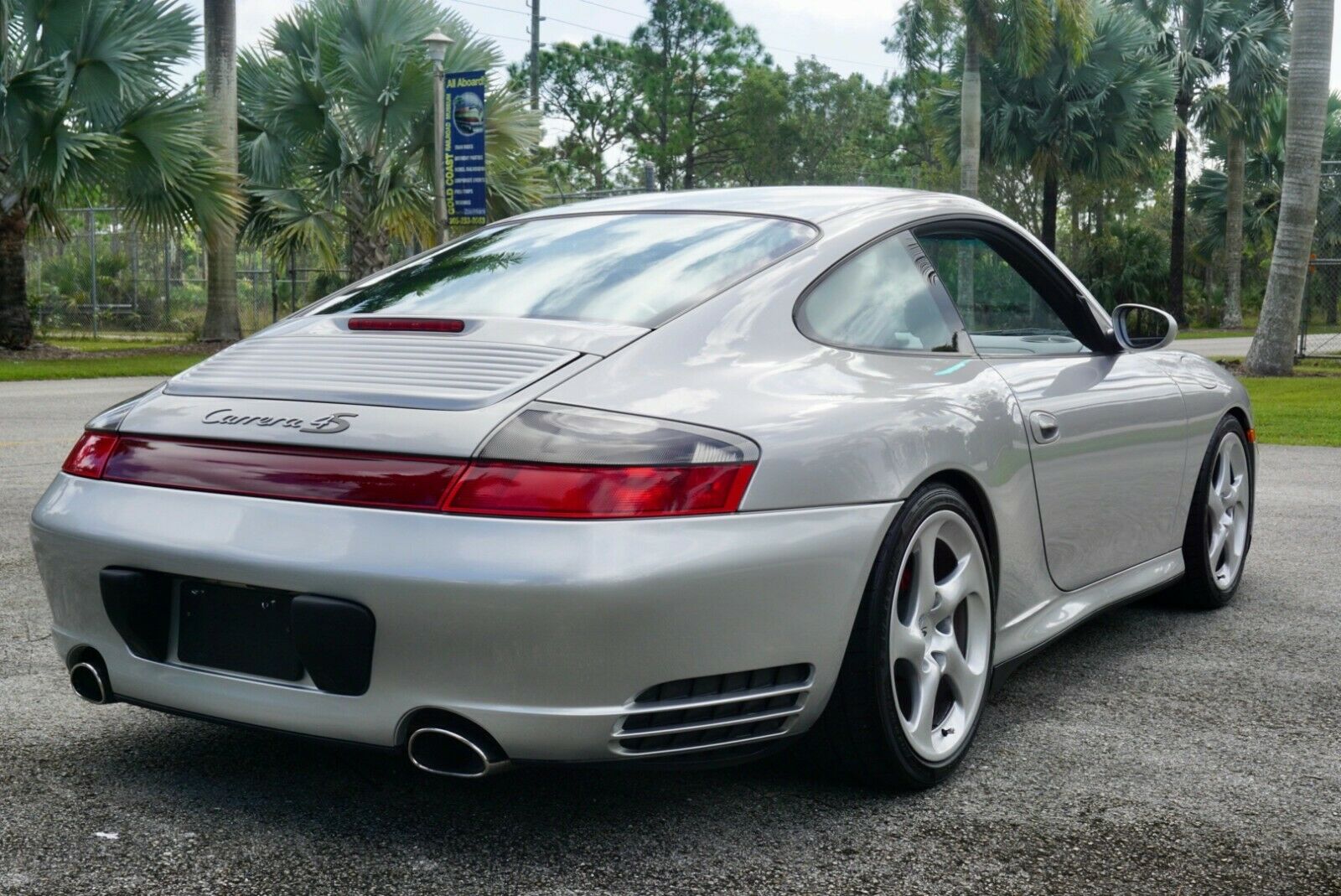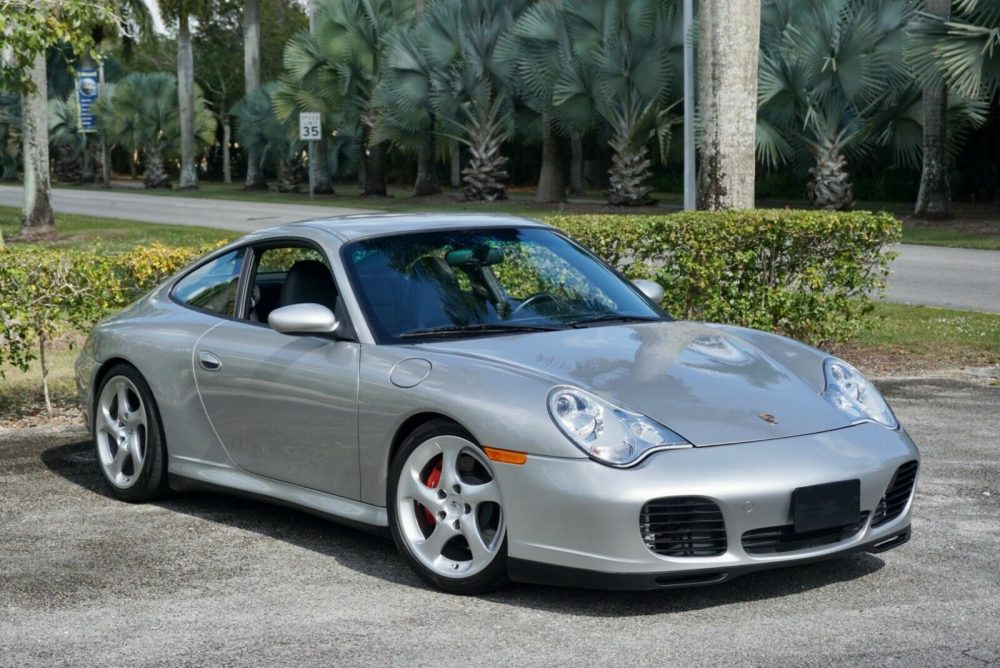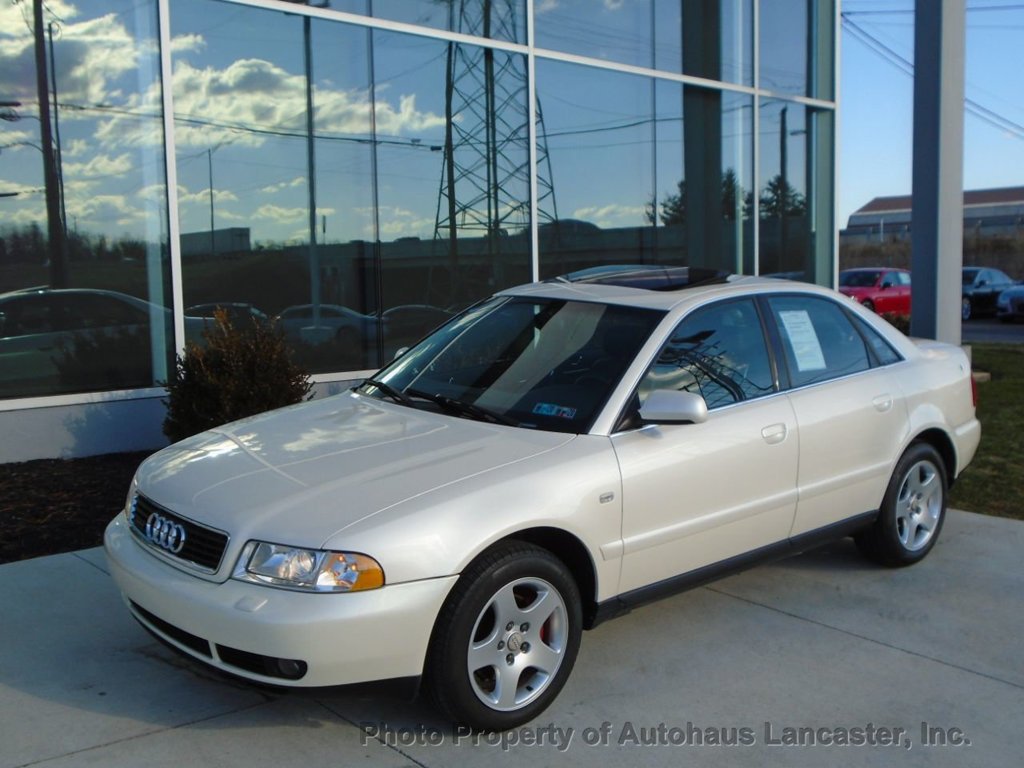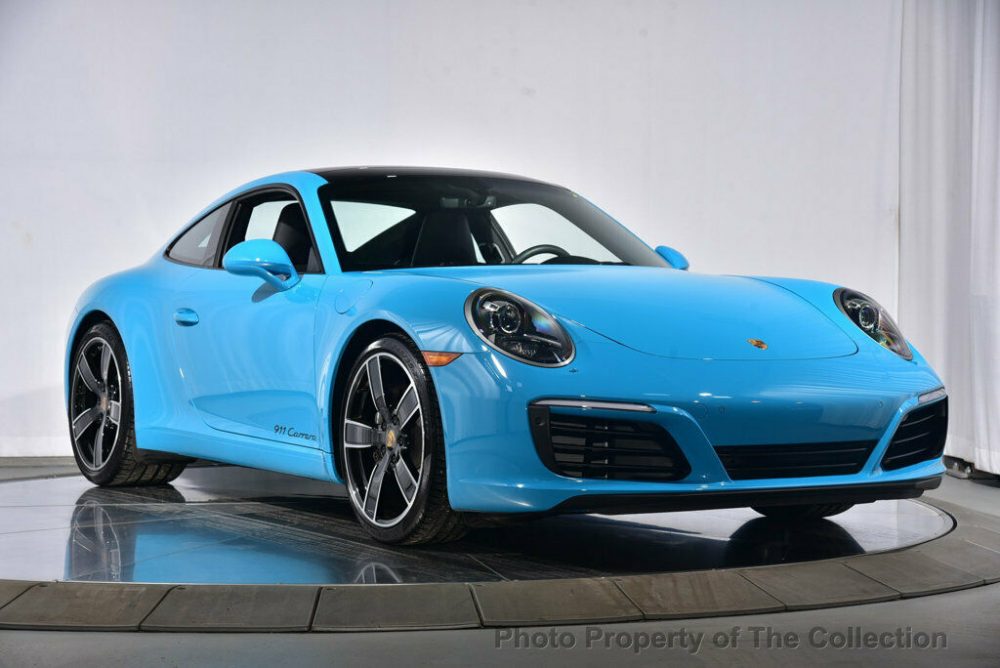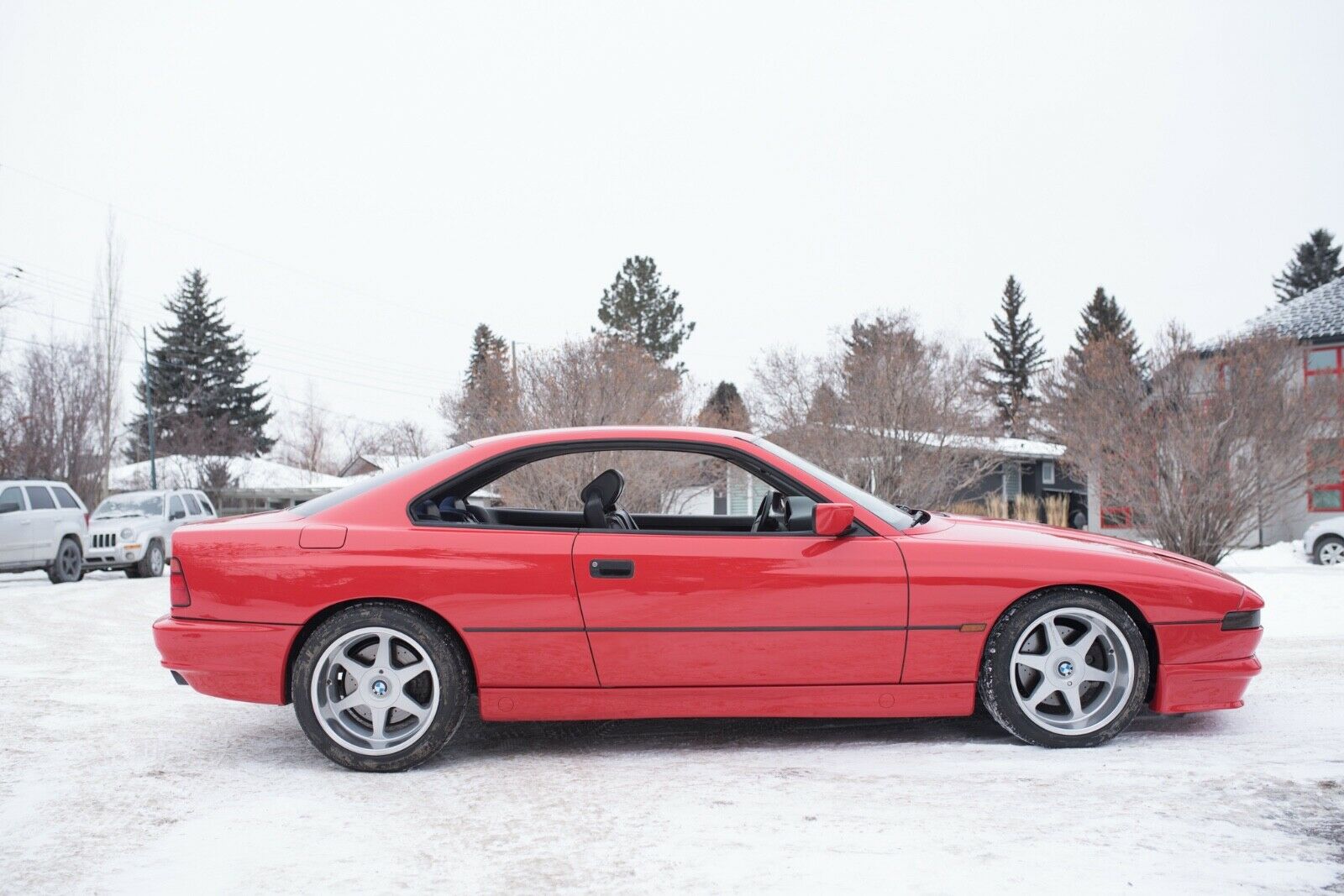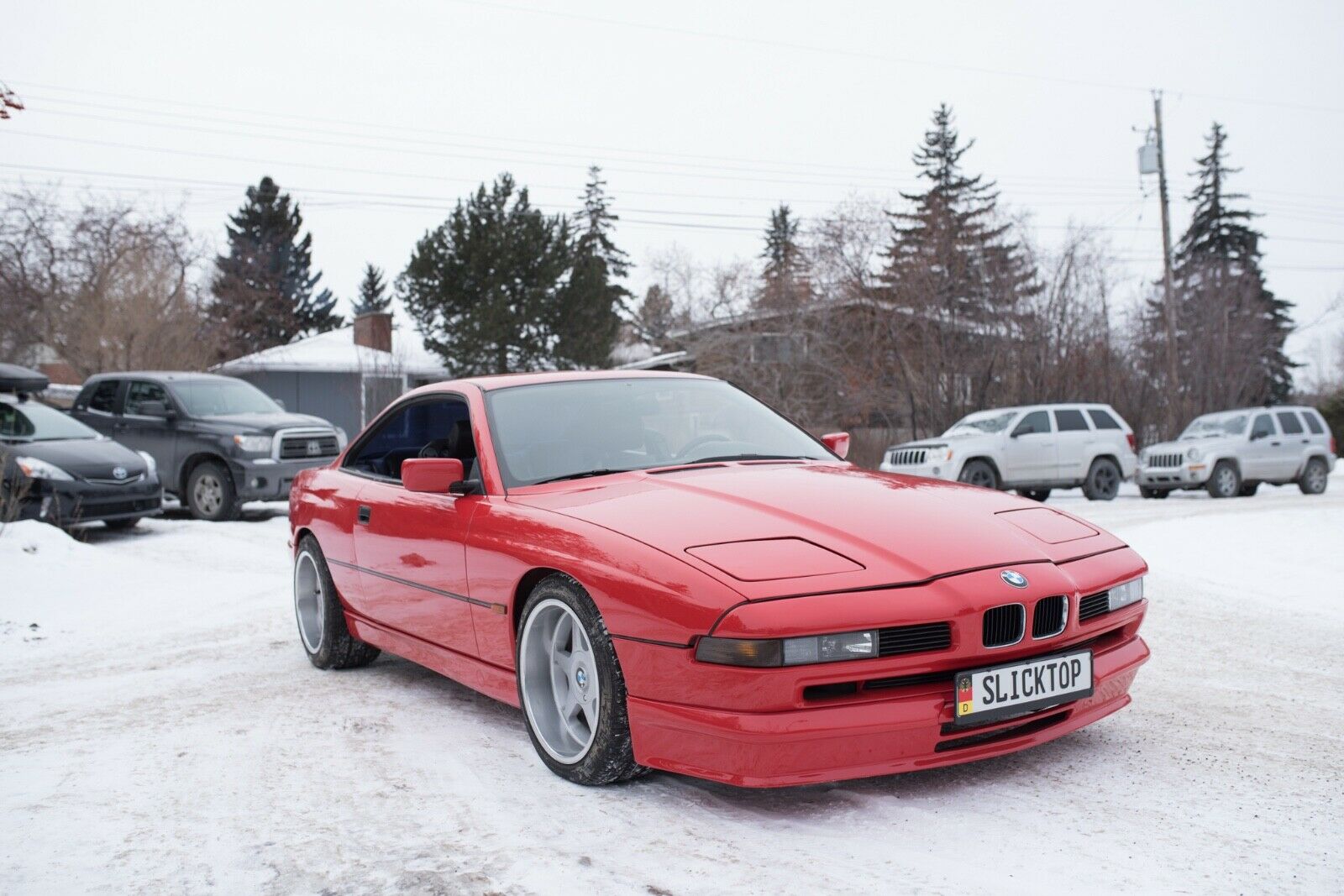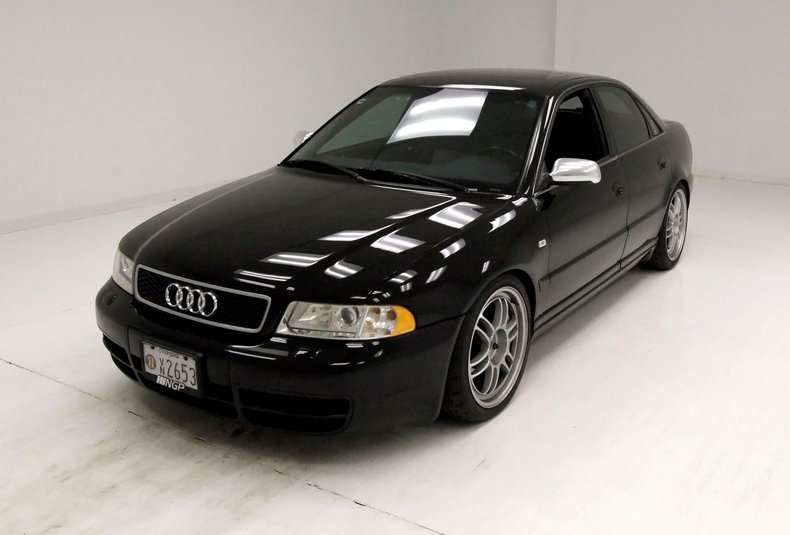In my opinion, in terms of dollar for dollar value, there is no better Porsche 911 than the 996 Carrera 4S. It has all the looks of the 996 Turbo, but for about half the price. In terms of reliability, as long as you take care of the boogie man IMS bearing, these cars are solid. Inside, you can go as tame or as crazy as you want, as the “special requests” just started to gain traction with the rise of the interior in the early 2000s. Today’s car, a 2002 up for sale in Miami, is just about perfect in terms of the whole package. Arctic Silver over black, full carbon fiber trim, and some H&R lowering springs to get rid of the pesky wheel gap. Sign me up.
German Cars For Sale Blog Posts
The classic blues have been so popular on Porsche 911s, that the company actually wised up and offered as a standard-ish color for the 991 chassis. From a money perspective, it seems like an odd move seeing as they know they’ll get another $7,000 or so if someone orders it for paint to sample, but maybe it was a logistics thing of them selling more cars to begin with if they could sprinkle some of these cars throughout dealer lots around the county. The blue offered on the 991 was actually Miami Blue (not Mexico Blue) that had just a little bit of a teal shade to it if you look at it in certain lighting. Meanwhile, the Mexico Blue that I linked, is a much truer royal blue that you would associate the color of blue with. Now don’t confuse that with Rivera Blue, as that is a little lighter shade of Mexico Blue. Are we having fun yet? This photo explains it best with left to right, Rivera, Miami, then Mexico. Easy.
Naturally people want this color more than a black, white, grey, or silver, so of course Porsche charged more for it. You thought you were getting off that easy? A more standard color like Jet Black Metallic or Agate Grey Metallic is $710, but Miami Blue? $3,140. That bigger price tag just isn’t exclusive to Miami, a color like Lava Orange also carries the same $3,140 premium. So now that the 991 production is done for good, people are dumping their cars to upgrade to the 992 and these special colors are now on the used market. This 2017 C2 up for in, wouldn’t you know, Miami, Florida, just has 3,400 miles on it. I hope the extra money was worth it.
CLICK FOR DETAILS: 2017 Porsche 911 on eBay
2 CommentsEuro cars always hold a special appreciation for me, especially from the 1970s and 1980s. First off, they were much better looking, generally with slimmer bumpers and larger, more clear class lights. There were colors and interiors that we didn’t get in the U.S. as well, helping to set yourself apart. Sometimes there were low-spec engines not imported, but usually the output of the motors that were similar to U.S. cars was higher, giving more performance to enthusiasts. Sometimes that gulf was huge; while usually around 10% higher, a great example is the Quattro which was a full 25% more powerful in Europe than the U.S. restricted version. But as we got towards the late ’80s, the gap inbetween both the looks and performance of the Euro models versus the U.S. models closed steadily. True, in some cases we still didn’t get the full-fat versions of cars like the M3 until the E46 chassis. But for most models, there was a negligible difference. When it came to the BMW E31, in fact, there were almost no differences between the U.S. models and European models; styling was exactly the same, as were the wheels, most of the colors and interiors, and the basic suspension and engine. So, it’s just not nearly as exciting to see a European-spec newer model like this ’91 850i pop up for sale, though it is a bit odd:
CLICK FOR DETAILS: 1990 BMW 850i Euro-spec on eBay
3 CommentsIn just a few years as the century turned over, Audi went from only one S model with very limited production imported in the C4 S6 to three models. Top of the range was the S8, but it shared its running gear and sonorous V8 in a slightly detuned state with the new C5 S6. For Audi enthusiasts, though, big news came with the launch of the new S4.
It was unrelated to the first S4 because of Audi’s renaming strategy in 1995. That meant that the new S4 was based on the small chassis B5, and U.S. enthusiasts finally got a taste of Audi’s M3 competitor. Performance came in the form of a new 2.7 twin-turbocharged V6 30V and was mated to either a 5-speed Tiptronic transmission like its bigger siblings or a 6-speed manual. Like other B5s, the S4 made use of the 4th generation of quattro technology driving all four wheels. This utilized a Torsen center differential with open front and rear differentials, both of which employed the ABS sensors to electronically ‘lock up’ the slipping wheels when a speed differentiation was detected. Like other S models, some light revisions to the bodywork and more pronounced exhaust were present, along with polished mirrors and 17″ Avus-design wheels. Most notable was the large front bumper cover with 6 gaping grill covers which hid the twin intercoolers for the motor. With 250 horsepower and 258 lb.ft of torque, you had an all-weather 155 mph warrior – and one that could easily be turned up many notches:
